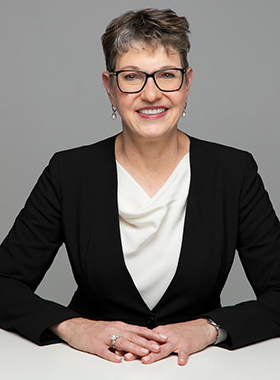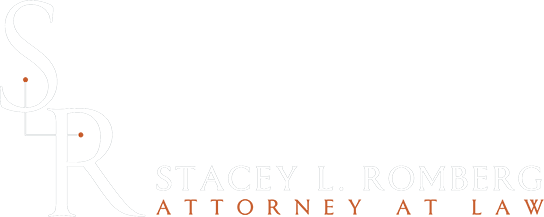Reprinted from the GPSOLO eReport, American Bar Association, Vol. 4, No. 1, by Stacey Romberg
- How can a virtual law firm best address initial client perceptions?
- How should in-person client meetings be handled?
Clients generally assume that an attorney practices from a brick-and-mortar office. In all likelihood, an attorney practicing virtually will seem radically different to clients due to their past experience with attorneys, as well as their preconceived images of law firms based on what they have seen on television and in the movies. In contemplating how to set up your virtual practice, consider how you might effectively communicate to your clients that you work virtually, and arrange your in-person meetings in such a way that your clients will be delighted and impressed with your innovative business model, rather than confused.
Tip #1: Explain the Virtual Model to Your Clients Proactively and Positively
To increase the likelihood that your clients will understand and appreciate your virtual practice, your communications regarding your office set-up need to be up-front, consistent, and clear, starting with your website and initial consultation and extending through the course of the attorney-client representation. As an example of a frequent misperception, Victor Virtual, an attorney practicing virtually from his home, is having an initial telephone consultation with Polly Potential Client. Polly likes Victor, and wants to retain his services. Victor says, “Thank you Polly. I’ll forward a legal services agreement over to you for your review and completion. Please send it back to me, and then I’ll get started on your work.” Polly responds, “Thanks Victor. I’ll fill it out, and then I’ll drop by your office. I’ll give you the agreement and the check for the advance fee deposit, and then hopefully you’ll be available so we can talk about my case.”
In this ideal case, Victor’s website clearly indicated that he operated a virtual law firm so as to minimize this type of misperception. Nonetheless, many potential clients either do not look at a lawyer’s website or do not review it carefully enough to notice. Also, for many clients, the concept of working virtually is so foreign that it requires additional explanation beyond a website description.
In the example given above, Victor might reply, “Thank you Polly. I don’t know if you had a chance to peek at my website, because it describes how I work virtually. Let me explain to you what that means.” Victor should then summarize his office set-up, so that Polly has a clear understanding prior to retaining his firm. In addition to describing his office, Victor could briefly explain to Polly, in positive terms, whyhe chose to set up his office virtually. For example: “I wanted to make my services more affordable for my clients, and I’ve found I’ve been able to reduce my fees because I don’t incur needless expenses such as rent.” Or, “I’m an environmentalist, so I wanted to promote a green office environment by setting up my office to minimize paper and reduce car trips.”
Embrace this discussion as an initial step in developing a strong attorney-client relationship. In my Seattle practice, I’ve had countless potential clients who were intrigued by my set up, but I cannot recall ever having a potential client decide not to work with me upon discovering that I work virtually. A successful attorney-client relationship is built upon trust, so a potential client should be informed of your virtual set-up before retaining you and, ideally, understand its advantages.
Tip #2: Coordinate In-Person Client Meetings to Meet the Client’s Needs While Avoiding Confusion
As mentioned in my previous articles, I work from home, rent a nearby conference room to meet with clients, and rent a nearby private mail box which is used as my firm’s mailing address. This set up is described on my firm’s website. Additionally, I explain this in a letter sent to all new clients. All in-person client appointments are confirmed in advance, generally by email, and the location of the conference room is stated again. Nonetheless, I find that approximately five percent of people meeting me for the first time are confused and go to my mail center rather than the conference room. Your office needs to be mindful that the virtual concept may be baffling to new clients. The meeting location should be communicated to your new clients clearly and repeatedly, so that you minimize the prospects of starting a relationship with a missed appointment and the resulting frustration.
Alternatively, you may choose to meet with clients in other varied locations such as their office, home, or a neighborhood coffee shop. Although I know attorneys who meet with clients in coffee shops or other public locations, I strongly discourage this practice. Privacy is vital in maintaining confidential communications with your client, and it cannot be guaranteed in these public spaces. When scheduling a meeting with a client in their home or office, be clear and up front with your client about whether your travel time will be billed. Also, be mindful of your unbilled travel time and your personal safety when scheduling client appointments in alternate locations, and make thoughtful choices.
When meeting with your clients, you should reasonably anticipate that they will ask wide-ranging questions regarding their file. If you practiced in a brick-and-mortar office, you could pull the paper file, find the pertinent document, and answer the question. As a virtual lawyer, this option will not be available. If you practice consistently within the virtual model, you will likely only have a digital client file. You will not impress your client by responding, “I practice virtually, so I cannot access your file right now. I need to go back to my office and look that up for you, and then I’ll respond.” Plan ahead, and make sure you can access the full client file during the meeting as well as any additional resources you may need. Bring your tablet or laptop to all client meetings. Your client’s file needs to either be fully loaded onto that device or you will need Internet access to review the file via your server or the cloud. Additionally, if you are meeting in a public place such as a coffee shop, plan out your Internet connection in advance and select more secure options such as your smartphone’s mobile hotspot, rather than public Wi-Fi.
If your meeting involves signing documents, you should again reasonably anticipate that your clients may want to change their documents during the appointment. Although last-minute requests for changes can often be easily accommodated in a brick-and-mortar environment, these requests tend to be more problematic for a virtual attorney. Plan in advance how you will revise and reprint the documents during the meeting if necessary in order to meet your client’s needs. If you are able to print documents at your designated conference room, but not at the client’s house or a coffee shop, be sure to communicate this limitation with your clients well in advance of the appointment, so that they can carefully review the documents and ask questions so as to avoid any last-minute changes.
A virtual lawyer, like any lawyer, wants to develop productive and positive attorney-client relationships. By taking a little extra time for advance planning and clear communications, your virtual business structure will impress your clients as an integral part of your outstanding client service.

 Phone: (206) 784-5305
Phone: (206) 784-5305